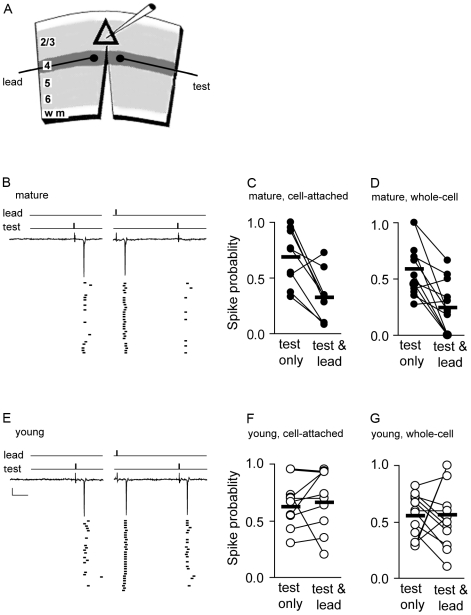Figure 7. The potency of one input pathway to suppress the probability of a convergent pathway from triggering a postsynaptic spike in layer2/3 pyramidal neurons in V1 is developmentally regulated.
(A) An experimental paradigm in visual cortical slices to examine the interaction of two convergent input pathways to drive postsynaptic spiking at layer 4→layer 2/3 connections. Triangle represents a layer2/3 pyramidal soma. Field stimulation sites for the lead and test pathways are depicted. The slice is cut between the stimulation sites to ensure that the two pathways are independent. The ability of Plead to suppress threshold stimulation of Ptest was assayed in both cell attached mode and whole-cell mode in mature (B–D) and young (E–G) slices in the presence of APV and CGP55845. (B,E) Example traces of cell-attached recordings with inter-leaved trials in response to pathway stimulation. Stimulus artifacts were clipped. Action potentials were detected as a capacitive transient, approximately 500–600 pA in amplitude. Raster plots of spike events are aligned to onset of Plead stimulation. 30 trials are displayed, 30–60 trails were collected for each cell. Spike probability was assayed from 2 to 10 ms following stimulation of the Ptest during the Lead-Test trial,scale bar: 100 pA,10 ms. (B–D) Spike probabilities of each cell during Test Only and Test-Lead trial stimulations are shown for cell-attached (C; n = 9), and whole-cell (D; n = 12) recordings from mature visual cortical slices (P26–30), mean probability (black bar). (E–G) Same as in b-d except recordings were done in young slices (P16–18). Cell-attached, n = 9, whole-cell, n = 12. Note that Plead potently suppressed Ptest from driving postsynaptic spiking in mature but not young slices.

